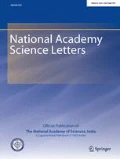Abstract
A high performance and energy-efficient 1-bit full adder (FA) circuit is proposed. For circuit validation, Cadence simulation is performed on the proposed and conventional FAs using 45 nm CMOS process technology. The proposed circuit achieves 19.68–65.33% saving in energy and 22.80–85.44% reduction in energy delay product (EDP) when compared to other reported adders. Monte Carlo simulation reveals that the proposed design yields good functionality and robustness against process variation. The design has been extended up to 32-bit adder. In short, the proposed adder offers comparable improvement in terms of power consumption, speed, energy and EDP.



References
Shams AM, Darwish TK, Bayoumi MA (2002) Performance analysis of low-power 1-bit CMOS full adder cells. IEEE Trans Very Large Scale Integr (VLSI) Syst 10(1):20–29
Naseri H, Timarchi S (2018) Low-power and fast full adder by exploring new XOR and XNOR gates. IEEE Trans Very Large Scale Integr (VLSI) Syst 26(8):1481–1493
Bhattacharyya P, Kundu B, Ghosh S, Kumar V, Dandapat A (2015) Performance analysis of a low-power high-speed hybrid 1-bit full adder circuit. IEEE Trans VLSI Syst 23(10):2001–2008
Rababey JM, Chandrakasan A, Nikolic B (2003) Digital integrated circuits: a design perspective, 2nd edn. Pearson Education, London
Aguiree Hernandez M, Linares Aranda M (2011) CMOS full-adders for energy-efficient arithmetic applications. IEEE Trans Very Large Scale Integr (VLSI) Syst 19(4):718–721
Hassoune I, Flandre D, O’Connor I, Legat J (2010) ULPFA: a new efficient of a power-aware full adder. IEEE Trans Circuits Syst I Regular Pap 57(8):2066–2074
Mirzaee RF, Moaiyeri MH, Khorsand H, Navi K (2011) A new robust and hybrid high-performance full adder cell. J Circuits Syst Comput 20(4):641–655
Goel S, Kumar A, Bayoumi MA (2006) Design of roubust, energy-efficient full adders for deep-submicrometer design using Hybrid-CMOS logic style. IEEE Trans Very Large Scale Integr (VLSI) Syst 14(12):1309–1321
Lee H, Sobelman GE (1997) New low-voltage circuits for XOR and XNOR. IEEE Proc Southeastcon 29(7):225–229
Author information
Authors and Affiliations
Corresponding author
Additional information
Publisher's Note
Springer Nature remains neutral with regard to jurisdictional claims in published maps and institutional affiliations.
Rights and permissions
About this article
Cite this article
Rajagopal, T., Chakrapani, A. Energy-Efficient Hybrid Full Adder (EEHFA) for Arithmetic Applications. Natl. Acad. Sci. Lett. 45, 165–168 (2022). https://doi.org/10.1007/s40009-021-01061-y
Received:
Revised:
Accepted:
Published:
Issue Date:
DOI: https://doi.org/10.1007/s40009-021-01061-y

